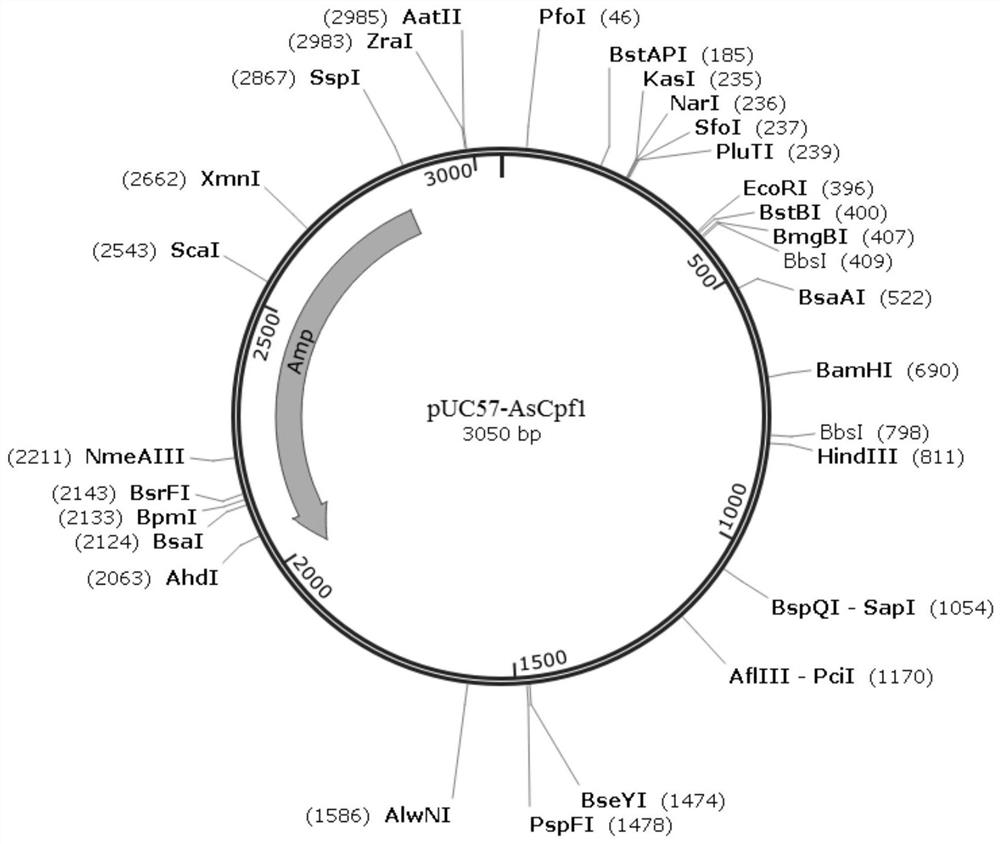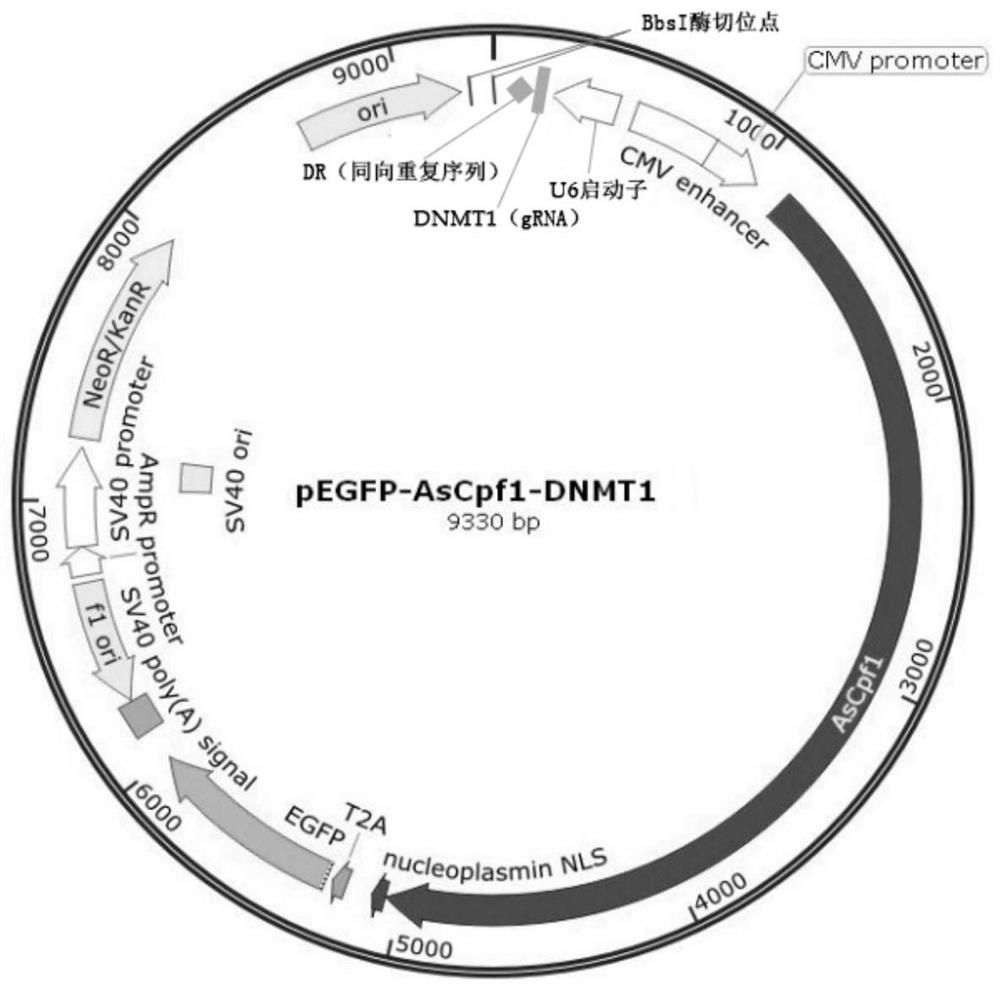Multi-target editing vector and its construction method and application
A construction method and multi-target technology, applied in the field of gene editing, can solve the problems of cumbersome experimental operation steps, limited gene editing efficiency, easy to produce off-target effects, etc., to expand the scope of editing, simplify experimental design steps, and reduce experimental costs Effect
- Summary
- Abstract
- Description
- Claims
- Application Information
AI Technical Summary
Problems solved by technology
Method used
Image
Examples
Embodiment 1
[0048] This embodiment provides a method for constructing a Cpf1 recombinant expression plasmid, wherein Cpf1 is codon-optimized AsCpf1 or LbCpf1, specifically comprising the following steps:
[0049] 1. Codon optimization
[0050] Cpf1 (AsCpf1 for short) derived from Acidaminococcus sp.BV3L6 was selected using codon optimization software (stored in Suzhou Jinweizhi Biotechnology Co., Ltd.), and human and mouse were selected as optimized species, according to the preference of human and mouse Codons, the codons in the original sequence of Cpf1 are replaced with the codon sites with different codon usage preferences from humans and mice, and the optimized AsCpf1 is obtained, and its nucleotide sequence is as shown in SEQ ID NO.1 shown.
[0051] Cpf1 (abbreviated as LbCpf1) derived from Lachnospiraceae bacterium ND2006 was optimized using the above codon optimization method to obtain an optimized sequence whose nucleotide sequence is shown in SEQ ID NO.2.
[0052] The optimize...
Embodiment 2
[0062] This embodiment provides a multi-target editing vector and its construction method. The core of the multi-target editing vector includes a Cpfl protein expression element and four sgRNA transcription elements, specifically including the following steps:
[0063] 1. Determine the target target and design the sgRNA sequence
[0064] Using the DNMT1, HPRT1, CCR5 and AAVS1 genes on the human genome as target genes, use the online design tool (http: / / rgenome.net) to find the PAM sites of Cpf1 on the coding and non-coding strands of the above four genes 5'-TTTN-3', and design the corresponding guide sequence (that is, sgRNA sequence) according to the PAM site, wherein the sgRNA sequence of DNMT1 is shown in SEQ ID.3, and the sgRNA sequence of HPRT1 is shown in SEQ ID.4, The sgRNA sequence of CCR5 is shown in SEQ ID.5, and the sgRNA sequence of AAVS1 is shown in SEQ ID.6.
[0065] 2. Design primers and synthesize targeted short fragments
[0066] Design paired primers for th...
Embodiment 3
[0084] This example provides a multi-target editing vector pEGFP-AsCpf1-ABCG1 and its construction method. The difference between pEGFP-AsCpf1-ABCG1 constructed in this example and pEGFP-AsCpf1-DNMT1-HPRT1-CCR5-AAVS1 constructed in Example 2 In this embodiment, three different sites on the ABCG1 gene are used as target sites to design sgRNA sequences respectively, wherein the sgRNA sequence of site 1 (ABCG1-g1) is shown in SEQ ID.7, site 2 ( The sgRNA sequence of ABCG1-g2) is shown in SEQ ID.8, and the sgRNA sequence of site 3 (ABCG1-g3) is shown in SEQ ID.9.
[0085] The difference between the construction method provided in this example and the construction method provided in Example 2 is that in this example, paired primers with different sgRNA sequences were designed for three different target sites, and the sequences of the paired primers are shown in Table 6.
[0086] Table 6 paired primers for different target sites sgRNA on the ABCG1 gene
[0087]
[0088]
PUM
 Login to View More
Login to View More Abstract
Description
Claims
Application Information
 Login to View More
Login to View More - R&D
- Intellectual Property
- Life Sciences
- Materials
- Tech Scout
- Unparalleled Data Quality
- Higher Quality Content
- 60% Fewer Hallucinations
Browse by: Latest US Patents, China's latest patents, Technical Efficacy Thesaurus, Application Domain, Technology Topic, Popular Technical Reports.
© 2025 PatSnap. All rights reserved.Legal|Privacy policy|Modern Slavery Act Transparency Statement|Sitemap|About US| Contact US: help@patsnap.com



